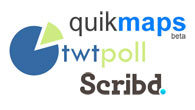Week 14 – Google Analytics basics
This week we cover the basics of Google Analytics and why it’s important to know in online journalism.

This week we cover the basics of Google Analytics and why it’s important to know in online journalism.

You’re a journalism student. You open your wallet looking for a fiver but a moth flutters out.
Turns out you don’t quite have the cash to pay for the tools you need to become an award-winning reporter. After all, Photoshop, Office, Audition and Final Cut Pro don’t come cheap. So what to do?
Luckily, there are alternatives that are pretty close to as good as the industry standards.

One thing is increasingly true wen it comes to journalism online: People don;t like reading long grey blocks of text.
“Small screens and ever-present distractions make it imperative that content be easily digestible and, if possible, interactive,” Tim Currie writes on page 295 of The New Journalist.
He adds that today there are more and more agencies, government included, that are making data public. These can be a goldmine for a journalist. But they tend to be database or spreadsheet tables — not very digestible.
So what to do?
“The answer,” Currie writes, “is data visualizations.”

Chances are you won’t have to worry too much about video formats, but knowing about them is not a bad thing.

Week 7 – Audio in a multiplatform world

Week 5 – Google Maps

Week 4 – Telling stories with photos and cutlines

Week 2 – An intro to adding content to a news site

Welcome to the Multiplatform Journalism Lab @ Morningside.
By the end of this course, 15 weeks from now, you’ll hopefully have had some fun on your way to becoming true multiplatform journalists.

I was at an all-day workshop yesterday at the Toronto Star put on by Robb Montgomery of Visual Editors out of Chicago. The entire day was about thinking of ways to present info visually to readers of online newspapers or blogs — and probably just as important to smaller outfits with limited resources, how to that for next to nothing.